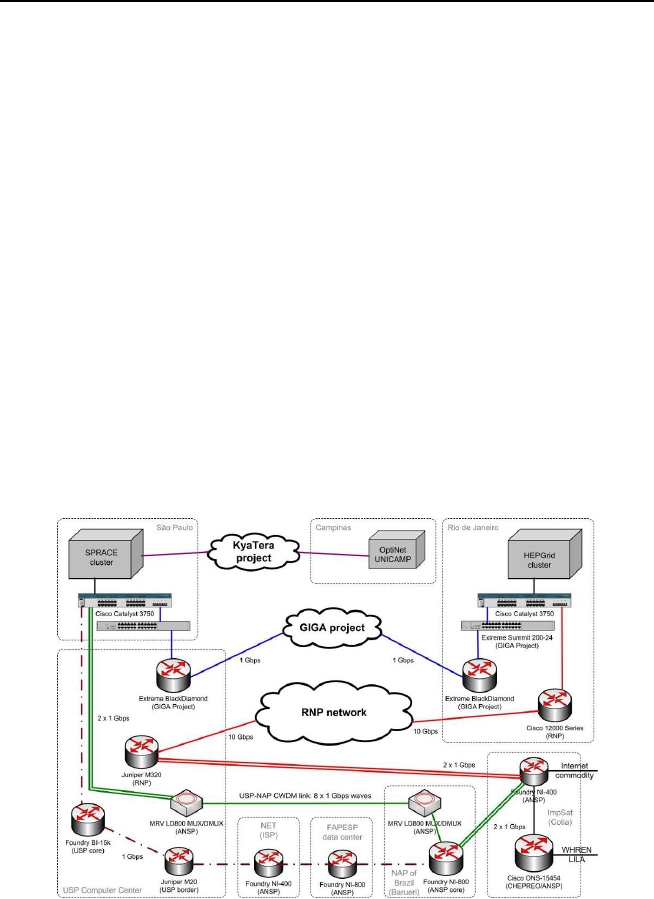SPRACE network connectivity Historical overview:
SPRACE started operating in March 2004. In those early days, we had only one main server
connected to USP Physics Institute through a 100 Mbps port in a shared Layer 2 switch. A few
months later the connection evolved to 1 Gbps, but remained connected to the local Physics
Institute network, which owns a single 1 Gbps connection to USP Computer Center that is shared
by hundreds of desktops and servers. By June 2005, we managed to connect SPRACE servers to
one of the routers of ANSP network, through a Cisco Catalyst 3750 switch-router donated by
Caltech. We used a Finisar FTR-1519 long-haul GBIC transceiver module loaned by ANSP at
one end, and a Cisco 1000Base-ZX SFP module donated by Caltech at the other end. Signal
strengths generated by both transceivers were enough to cover a distance of more than 40 km
between USP Physics Institute and NAP of Brazil in Barueri.
Until January 2006, we were ourselves lighting one of the fiber pairs that connects USP and NAP
of Brazil, while waiting for the new WDM boxes acquired by ANSP but retained in the Customs.
By the end of 2005, however, a new telecom provider, CTBC Telecom, took over the contract
with ANSP, and they had to start using a longer fiber pair connecting USP and NAP of Brazil.
Unfortunately, the transceivers' signal strengths were not enough to overcome fiber attenuation
and we could not reach Barueri anymore. This problem was temporarily solved by connecting
SPRACE gateway, the Cisco 3750, directly into USP network backbone. SPRACE servers were
kept attached to one of USP core routers until October 1st, 2006, when we finally managed to
connect it again directly to NAP of Brazil, now using ANSP newly installed WDM MAN
network.
Figure 92 below shows the SPRACE network connection as it is in these days, as well as the
interconnection with our partners in Rio de Janeiro. Green lines in Figure 92 indicate the path
SPRACE network traffic follows to reach the WHREN-LILA link, whereas dashed lines indicate
the temporary network path we used to reach AMPATH from January to October 2006, through
USP network backbone.
Figure 92: São Paulo and Rio de Janeiro HEP facilities' network connectivity
159

